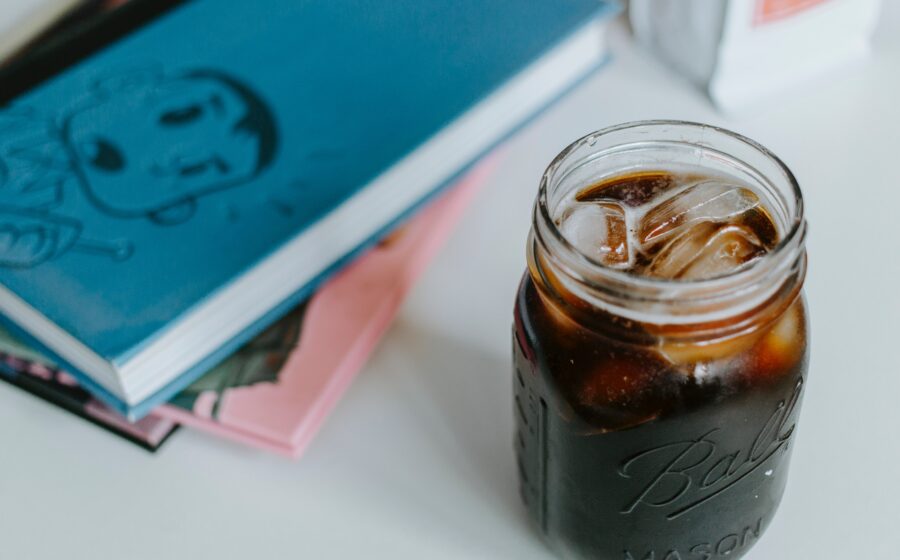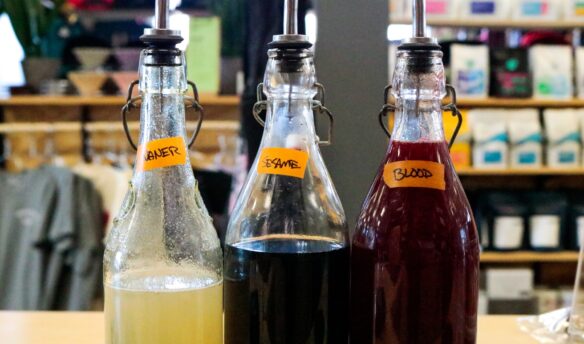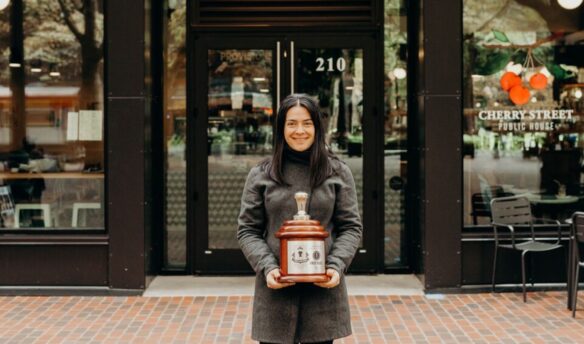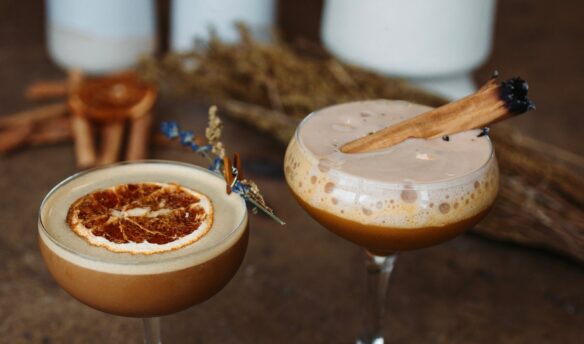Love it or hate it, cold brew coffee has never been more popular, and the category shows no signs of slowing down. From an ever-growing number of ready-to-drink beverages to nitro-infused and draft options, it’s an increasingly crowded marketplace.
Although there’s no denying the demand, compared to espresso and filter coffee, cold brew presents its own unique challenges. But with the right strategy, cold brew can help drive profits in the notoriously slower summer months, and even touch on a new customer base.
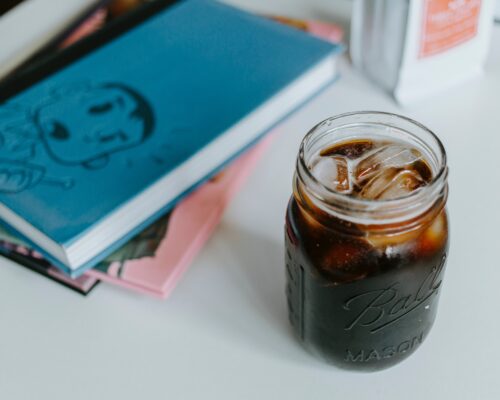
“One of the bigger reasons cold brew is continuing to grow is that more people are finding out about it,” says Jenny Bonchak. Bonchak is the founder of Slingshot Coffee Company, a Raleigh, North Carolina-based company that produces bottled cold brew in ready-to-drink and concentrate formats. “It’s not an obscure thing anymore.”
“Carbonated soft drinks and energy drinks are on the decline, and cold brew not only tastes great but also sits at the confluence of so many macro trends,” says Hugh Duffie, cofounder of Sandows, a London-based bottled cold brew company.
If cold brew is simply a menu option for warmer months, it’s time to think critically about how to carve space for a unique—and quality-driven—version of this popular refreshing beverage.
Navigating the Sea of Cold Brew
As cold brew continues its move toward peak market saturation, cafés will need to differentiate their offerings.
“If you’re going to serve cold brew, you need to make sure it’s as good as your espresso. Like any well-brewed coffee, it doesn’t just magically happen,” says Bonchak. “Not every coffee is going to react the same way, and you really have to hone that recipe.”
In Bonchak’s experience, many cafés struggle to serve a consistent product because they fail to implement the same quality control protocols they might use for other beverages. Making cold brew is often assigned as a closing duty and hastily executed by a barista trying to get out the door.
“It’s our job to make sure we’re providing the best quality that we can,” she says. Bonchak observes that many quality-focused cafés elect to carry a ready-to-drink option rather than make their own. This might be motivated by a lack of infrastructure or the convenience of having a consistent, high-quality product.
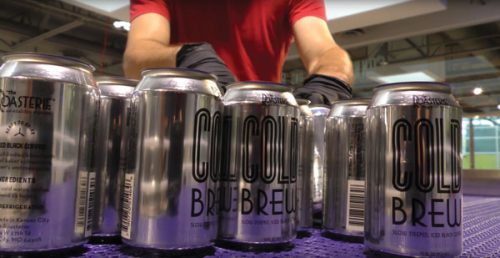
“To make enough cold brew to service a relatively popular café, you need a lot of space to do that,” she says. There’s also the matter of scale.
“When you make cold brew, it will take your team members roughly the same amount of time to make a small batch—let’s say, somewhere between three to 10 liters—as it will take a specialist cold brew company to produce 1,000 to 10,000 (liters),” says Duffie. “It’s simple economics that they’re able to invest more in ensuring that it’s consistent and that hygiene standards are upheld.”
Sandows utilizes light pasteurization to ensure sanitation and lengthen shelf life.
“In coffee, we often become complacent about food safety because of the sterilizing properties of hot water in most brewing,” says Duffie. “It’s important to remember that cold brew doesn’t have that same failsafe and needs a different approach.”
He recommends that cafés that make their cold brew be careful not to keep a batch of cold brew too long. “This isn’t just cold brew that’s past its ‘best before’ date,” he says. “It will ferment and likely take on an acetic, vinegar flavor.”
To Bottle or Not to Bottle?
For many cafés, especially roaster/retailers, selling a bottled cold brew makes less business sense than making their own.
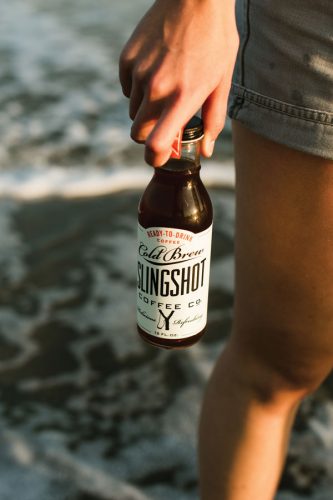
“It may very well be a viable option for some multi-roaster model cafés or restaurants,” says Matthew Stevenson, director of retail at Quills Coffee. “But for a roasting/retail company like Quills, buying and distributing another company’s product is less feasible and less profitable.”
Stevenson warns that cold brew has long steep times, and underestimating demand can be costly. Generally, it’s better to have some waste than run out during the day.
“Cold brew is in such high demand these days and available nearly everywhere, so we don’t want to give our customers a reason to start buying it other places,” says Stevenson. “It doesn’t take more than one or two disappointing experiences to build a reputation with those customers who only purchase cold brew.”
Cafés that decide to brew their cold brew will have to pick a method. Slow-drip towers, often called Kyoto brewers, are eye-catching, elegant devices with a flavor profile that many coffee professionals prefer. With glass beakers and nozzles, the systems require careful handling and take up a lot of counter space. While certainly a conversation starter, the high price tag makes this cold brew method a luxury for many cafés.
There’s nothing glamorous about brewing cold brew in what’s essentially a large bucket. Still, the affordability and durability of the Toddy system make it the preferred method for cafés on a budget.
For larger-scale brewing, some cafés have rigged their own systems by modifying fermentation tanks normally used for brewing beer and wine. Immersion cold brew methods usually make a concentrate cut with water to taste.
Offering cold brew on draft or infused with nitrogen can be another way to add value for customers and set apart one’s offering. Each café must decide whether it’s worth the equipment costs of installing a keg system.

“Nitrogen is flavorless on its own and doesn’t react with the coffee, so it only adds a frothy head to the coffee,” explains Steve Rhinehart of Prima Coffee, which sells keg and refrigeration units for cold brew. Rhinehart has seen an increase in demand for cold brew on draft and nitrogen.
“Because of the extra surface area of the bubbles on top of the coffee, it could enhance the aromatic qualities of the cold brew,” he says, “but I find most people just enjoy having a creamy foam on their coffee.”
The Bottom Line
Cafés that want to maximize their cold brew program must ensure that their product is excellent and appropriately priced. Cold brew is significantly less efficient than other brew methods, with some recipes calling for more than twice the amount of ground coffee than SCA Golden Cup ratios.

The higher cost of goods associated with cold brew might tempt a café to cut costs elsewhere. It’s not uncommon for shops to use stale coffee or source a cheaper blend for cold brew. According to Bonchak, café managers might want to rethink these cost-cutting strategies. “It’s never a good idea to use a stale coffee for cold brew,” she says.
Whether they land on ready-to-drink bottles, nitro-on-tap, or a classic Toddy, cafés with a thoughtful, well-executed program are poised to sell a lot of cold brew in 2018. Cafés would do well to take a page from Sandows’s mission statement: “Our mission is to share the specialty coffee that we love with more people through our cold brew format.”
Try this Cold Brew Short Rib Recipe.
Michael Butterworth is the cofounder of etkincoffee.com and thecoffeecompass.com. He lives in Istanbul, Turkey.
This article was originally published on March 21, 2018 and has been updated to meet Fresh Cup’s current editorial standards.

